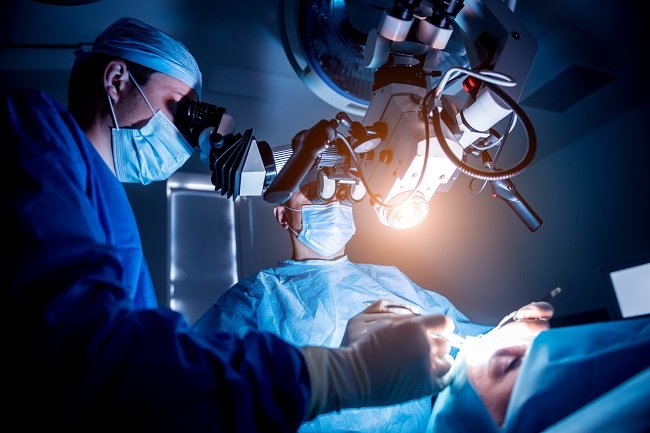A brain tumor is a situation where there is a mass or abnormal cell development in your brain.
It causes symptoms such as headaches, anxiety, extreme fatigue, and speech difficulties and keeps the body balanced.
Unfortunately, signs of brain tumors are often ignored until they grow into cancer.
Neurosurgery expert Gene Barnett also says there are various characteristics of brain tumors that we should be aware of.
“Brain tumors can appear with many different characteristics and signs, depending on where they are located,” he added.
Brain tumor cues
There are various factors that cause symptoms in patients with brain tumors, including the location of the tumor and the size of the tumor.
However, there are early signs that address the presence of a brain tumor. Next is the sign:
1. Seizures
Tumors that form in the brain can make neurons in that zone very active. This is what causes tension.
2. Cognitive shrinkage
Tumors in the brain can also cause cognitive declines such as indecision, difficulty dividing simple numbers, or forgetfulness.
3. Change of character or behavior
The growth of tumors can also cause changes in character or attitude.
For example, people who previously had narration turned into gloomy people or people who were quiet became more talkative.
4. Vision problems
Tumors that develop in the zone of the brain that controls vision can affect your vision.
This can make the view lift, double, or even disappear.
5. Headache
Headaches due to brain tumors usually last for a long time. Moreover, the headache often causes nausea and vomiting in the morning.
The method of healing is surgery. Brain tumor surgery with fluorescence is a method of brain tumor surgery using a special dye solution that can characterize the tumor. This method is intended to facilitate the way the tumor is raised.
Brain tumor surgery is attempted to remove all or some of the tumors that develop in the brain, whether benign or malignant. There are various methods that can be used in this surgical method. One of them is with the encouragement of fluorescence.
The fluorescence method was tested using a magnifying glass, bluish light, and a special dye solution. One type of blush solution that can be used is 5-aminolevulinic acid (5-ALA). This solution is commonly used in the surgical removal of malignant brain tumors (glioblastoma).
Purpose and Symptoms of Fluorescence Brain Tumor Surgery
Brain tumor surgery with fluorescence is tried to remove tumors that develop in the brain. Brain tumors are characterized by a variety of signs, related to the type, dimensions, and position of the tumor. Some of the signs that can arise are:
Headaches that are getting worse and worse
Vomiting that spurts
Amnesia
Change of character, for example being easily angry
Indecision or shrinkage of the brain
It’s hard to protect the balance of the body
It’s hard to talk
Urinary incontinence
Obstacles of vision, such as lifting foot view, double, or partially disappear
Tension, especially in people without a history of seizures
If the tumor is small and the margins are clear and therefore easily distinguishable from the surrounding fresh brain tissue, tumor enlargement will be easier to try.
However, in malignant tumors, the tumor margins are not marked and thus more difficult to distinguish from the surrounding brain tissue. In such cases, fluorescence stimulation is needed to determine which is tumor tissue and which is fresh brain tissue.
This method is tried by giving patients a special blush solution in the form of water that must be drunk before surgery. This solution will then be absorbed by the tumor tissue in the brain.
Brain tumor surgery with fluorescence has been shown to help doctors remove more tumor tissue and lower the risk of complications.
Precautions Before Carrying out Brain Tumor Surgery with Fluorescence
Before performing fluorescence brain tumor surgery, tell your doctor if you have any special allergies, including allergies to anesthetics. This is to avoid the appearance of an allergic response to the drug.
Tell your doctor if you have or are currently suffering from a blood clotting problem.
Inform your doctor if you are pregnant or planning a pregnancy.
Tell your doctor if you are taking special medications, such as blood thinners, supplements, or herbal remedies. Do not stop taking the drug without the doctor’s knowledge.
Do not smoke for at least a few weeks before surgery. This is because smoking can slow down the treatment method after surgery.
Planning Time before Carrying out Brain Tumor Surgery with Fluorescence
Early checks will be tried 1-2 weeks before surgery. This check is also intended to confirm that the patient’s condition is fresh enough to carry out the surgery.
Doctors will prescribe several types of drugs to reduce swelling in the brain and avoid complications.
Patients will be asked to arrive at the hospital one day before or on the day of surgery. If the patient has not carried out an early check, a check will be tried when the patient arrives at the hospital.
When going to the hospital, patients are advised to bring personal items that may be needed while in the hospital, such as sleepwear, underwear, sandals, and other personal equipment.
When before surgery is attempted, patients need to abstain for 8-12 hours. The nurse will ask about the last time the patient consumed food or drink. Patients are also required to take off all the jewelry they wear and are not allowed to use contact lenses and any makeup, including nail polish.
About 2-4 hours before surgery, the patient will be asked to drink a special blush solution, i.e. 5-ALA solution. This solution will enter the bloodstream and be absorbed by tumor tissue in the brain. The use of the blush solution is to make the tumor tissue glow red when irradiated by blue fluorescence during surgery.
The patient will be asked to lie down on the bed and then be taken to the operating room. The patient will be given a regular anesthetic, as a result, he is completely unconscious during the operation.
Methods and Actions of Brain Tumor Surgery with Fluorescence
After being sedated, the patient will be taken to the operating room and then transferred to the operating table. The surgeon will place the patient’s head in a suitable position to allow surgery to be performed on the right part of the brain. Some or all of the patient’s hair will be shaved, so the doctor can perform the operation.
The operation begins by cutting some of the bones of the patient’s skull. After that, doctors will perform surgery on the brain to remove the tumor. Some of the equipment commonly used to transport brain tumors are:
Surgical knife or special scissors
Special magnifying glass, to see brain tissue more clearly
Fluorescence lamp with blue light
A special blush solution that the patient has drunk before the surgical procedure will be absorbed into the tumor, and cause the tumor to glow a pink light when irradiated with blue light. That way, doctors can distinguish the edge of the tumor from the fresh brain tissue around it.
After the tumor is raised, the skull bone of the patient’s head will be returned to its initial position. The doctor will use some metal brackets to keep the part in place. After that, the scalp is short





